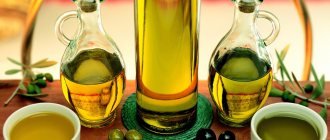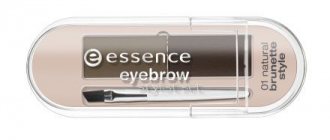Essential oils are used for aromatherapy sessions, making home cosmetics, perfumes and soaps. High-quality oils can be bought at the pharmacy, but if you need a lot of them, it is expensive. Cheap products raise suspicions, because there is no certainty that the manufacturer did not use harmful synthetic additives. There is another way. You can figure out how to make essential oil at home, stop buying it at the pharmacy and forever forget about the difficult choice between “expensive” and “high quality”.
Preparation of phytoraw materials: features of plant collection
In theory, aromatic oil can be made from almost any plant, as long as you like its smell. In practice, everything is much more complicated. If you try to make lily of the valley oil, for example, you will end up with a weak-smelling product because the concentration of aromatic substances in the flowers is only 0.04%. But the fruits of the clove tree will give a rich smell, since the percentage of odorous components in them reaches 22%. Therefore, it is advisable to find out such nuances in advance before harvesting phytoraw materials.
Follow us on Instagram
Each plant has its own characteristics of development, flowering and ripening, and it is better to know them. But there are general rules that are suitable for any type of herbal raw material:
If you plan to make oil from the flowers, wait until they have fully opened. Choose healthy parts of the plant that are not damaged by insects and microorganisms.
Harvesting rhizomes should begin in the fall. When the leaves of the plant begin to dry, the roots will have the highest concentration of active substances.
If stems or leaves are needed, it is best to cut them off before buds begin to form on the plant.
In the case of using stems or leaves, the raw materials are collected before the formation of buds. And if you need the entire above-ground part of the plant, then cut it off at the very beginning of the flowering season.
If you collect seeds and fruits, they must be fully ripe.
Collect any plants that you plan to harvest in the morning, when the dew has dried, preferably in dry weather.
Aroma oils are prepared from fresh and dry herbal raw materials, so you can easily stock up for future use. The main thing is that the plants grow in an environmentally friendly place and are properly stored until used.
What are base oils and how do they differ from essential oils?
In descriptions of recipes and methods for using essential oils, you can often find the wording “2 drops of essential oil per 10 ml of base oil.” Let's figure out the difference between these two oils.
Essential oils are volatile liquid mixtures of aromatic substances obtained from various parts of plants: leaves (mint, eucalyptus, etc.), flowers (rose, jasmine, neroli, etc.), seeds (cumin, anise, etc.). d.
), fruit peel (citrus), bark (cinnamon), flower buds (cloves), wood (cedar, camphor) or roots (iris) and other most aromatic parts of plants.
Being a highly concentrated substance, absolute essential oils in their pure form cannot be applied to the skin, as this is fraught with burns and allergies. The only exceptions are two oils - lavender and tea tree essential oil.
Base oils (carrier oils, base oils, base oils, transport, carrier oils) - similar to essential oils, these are also oils of plant origin. As a rule, they are extracted by pressing from seeds, seeds and nuts of plants.
Rich in mono- and polyunsaturated fatty acids, which are so necessary for our body, they are perfectly absorbed by the skin and penetrate deeply without causing allergic reactions.
Due to their natural origin, essential oils dissolve well in base oils and ensure safe application of the latter to the skin.
Most carrier oils are liquid at room temperature, so mixing it with an essential oil or extract is easy. The exception is solid vegetable oils, also called butters, such as cocoa butter, palm butter, coconut butter and shea butter. Solid vegetable oils are heated in a water bath before mixing with essential oils.
When it comes to the scents of base oils, most of them have a faint, sweet, nutty odor or no scent at all. A strong, bitter aroma from a base oil is a sure sign that it has gone rancid.
All carrier oils have different combinations of beneficial properties and other characteristics, which determine the choice of oil.
The beneficial properties, color, aroma and shelf life depend on what essential and base oils are included in the product.
The permanent assortment includes both the most popular base vegetable oils and quite rare ones:
Avocado oil . The oil is obtained from pre-dried avocado fruits.
Rich in lecithin, vitamins A, B and D, contains polyunsaturated fatty acids in very high concentrations, due to which it heals the skin, fights dryness, flaking, sagging and decreased elasticity.
In addition, this oil serves as an excellent remedy that soothes the skin and relieves redness and inflammation, and also activates the regeneration process of damaged skin cells. Recommended for dry and aging skin.
Grapeseed oil. The lightest oil, has high penetrating ability, so it is suitable for any skin type.
It has an anti-inflammatory effect, regulates sebum secretion, tightens pores, moisturizes and mattifies the skin, restores its elasticity and firmness; due to these properties, it can often be found as a recommended oil for problematic, oily skin and acne.
Jojoba oil. One of the especially valuable oils, therefore quite expensive.
Its chemical composition is superior to all other cosmetic oils, but it is not recommended to use it in its pure form - it is advisable to mix it with any other base oil in a 1/3 ratio.
Restores elasticity, moisturizes and soothes the skin, relieves irritation, helps with dermatitis, nourishes and smoothes out fine wrinkles.
Laminaria oil. Intensively moisturizes and nourishes the skin, restores, increases firmness and elasticity, improves cellular metabolism and saturates it with oxygen, which creates a visible rejuvenation effect.
Has a healing, anti-inflammatory, regenerating, calming effect. Activates microcirculation of blood and lymph, removes toxins and accelerates the process of lipolysis, which is very effective in combating cellulite.
Recommended for massage and oil wraps.
Macadamia oil. This oil is obtained from macadamia nuts. Macadamia fats contain monounsaturated palmitic acid, found in human skin but almost never found in other plants. Recommended as a product for nourishing, softening and rejuvenating the skin.
It is especially effective to use this oil in winter, when stress, dryness and frostbite are frequent companions of the skin.
Sweet almond oil. Easily absorbed, contains vitamin E, nourishes and cleanses the skin. Activates the process of cell regeneration, recommended for owners of dry and tired skin. Gives excellent results in caring for the skin around the eyes: wrinkles are smoothed out and the skin becomes hydrated.
Evening primrose (evening primrose) oil . It has the most pronounced effect on sensitive, allergic, dry and irritated skin, instantly soothing, relieving irritation and redness.
Evening primrose oil, added to any base, is suitable for regular or special care as a nutritional supplement - softening, restoring beauty, tone and health.
The rejuvenating effect is especially pronounced, in particular, the ability to prevent aging and sagging skin.
Sasanqua (camellia) oil. Sasanqua oil consists of 83-88% oleic acid, while other oils contain significantly less of this valuable substance.
An important property of sasanqua oil is its almost complete absorption by the skin. It especially actively nourishes the scalp, strengthens the hair follicle and gives hair a healthy shine.
In addition, it has the property of strengthening the nail plates and has regenerating and moisturizing properties.
Fucus oil. The oil stimulates the regeneration of skin cells, strengthens and effectively protects it, increasing immunity.
Promotes the penetration of bioactive components and vitamins into the skin, protects it from premature aging.
Stimulates lymphatic drainage, removes toxins, has a powerful anti-cellulite effect, effectively reducing fat deposits. Recommended for massage and oil wraps.
You might be interested:
5 Ways to Use Flower Water
Source: https://www.aromastyle.ru/stati-ucheb/737-2017-06-08-17-13-36.html
How to make essential oil: available technologies
Before you start harvesting herbal raw materials, figure out which cooking methods are suitable for the selected plants and what will be easier for you personally. Whatever technology you choose, homemade aromatic oil will be natural and environmentally friendly.
Distillation - a simple method if you have a distiller
If you are willing to spend money on a distiller, then the process of making oil will be simple and relatively quick (from 30 minutes to 6 hours depending on the raw materials). Distillation requires dried or fresh plants. If you need to add water, it should be soft and clean.
Cooking technology:
Place the raw materials tightly but carefully into the distiller without breaking any parts of the plants.
Boil the herbal raw material in a distiller until it releases oil.
Store the finished product in a dry place in a thick dark glass container. All!
You will receive high quality natural essential oil. It is unlikely that there will be a lot of it, but there is no doubt about its benefits and purity. Any plant can be used.
Squeezing: labor-intensive, time-consuming, but effective
The extraction technology is ideal for obtaining essential oils from fresh leaves of peppermint, eucalyptus, rosemary, basil, parsley, and sea buckthorn.
For all plants except sea buckthorn, this method is suitable:
Rinse and dry the herbal raw materials, put them in a bag and beat them well with a hammer until the juice appears.
Boil a glass jar and transfer the beaten mass into it along with the juice.
Pour the base oil over the raw materials, shake well several times to mix the ingredients. After this, leave for a day in a dry, dark place.
Squeeze out the mixture, strain, and set aside until the next portion of the same product is added.
Prepare 2-3 more portions of butter in the same way. Pour everything into a dark glass bottle and store in a cool, dark place.
Sea buckthorn contains a large amount of healing oil, so it is better to squeeze it out in other ways:
Technology first. Wash 1 kg of berries, squeeze out the juice (you can use a juicer). Filter the finished juice and place in a cool place. Wait until an oil film appears on the surface of the juice and carefully remove it with a spoon. Store essential oil in a dark glass bottle in a cool place.
Second technology. Wash 200 g of berries, squeeze out the juice, set aside, remove the oil. Spread the pulp to dry. When the product is completely dry, grind it in a coffee grinder and add heated oil (about 40 degrees). Mix the ingredients thoroughly and leave for 2.5 weeks, shaking the jar occasionally. Filter the finished product and store it in a dark glass bottle.
Both methods allow you to obtain natural sea buckthorn oil, suitable for use for medical and cosmetic purposes, but the second is better: you can extract all the healing substances from the plant. This oil saves from stomatitis, skin rashes, and gastrointestinal diseases. It is used in the treatment of hemorrhoids.
Extraction method: simple, cheap, but long
This is the easiest way to obtain aromatic oils. It requires a lot of time, but the cost of money and effort is minimal. How to make essential oil:
Chop the plants and place them in sterile jars.
Fill the herbal raw materials with base oil. It is best to use olive oil, but corn or sunflower oil will work.
Seal the jars tightly and leave the mixture to infuse for 4 weeks, turning several times a day.
Filter the oil and pour into a dark glass bottle.
Using this method, you can prepare oils from almost any plant. They are suitable for cosmetic, medical and aromatherapy purposes.
Oils for stress. Video
The video tells how to use essential oils to get rid of stress and restore peace to your soul and beauty to your body.
Oily skin is sensitive, so sometimes allergic reactions to the formulations used occur. Before you start improving your face or hair, you should do a little testing.
Some people may be intolerant to any aroma oil. Therefore, the above recommendations are unlikely to be useful to them. But those who actively practice essential oils for the skin should take into account the fact that some drugs are not compatible with sunbathing. In particular, these are orange, lemon and bergamot oils.
Aromatherapy based on essential oils
Properties of some popular homemade aromatic oils
All the oils that will be discussed can be prepared using the extraction method - the least energy-consuming:
St. John's wort. The oil is prepared from only one variety of the plant - St. John's wort. An excellent remedy for treating abscesses, burns and wounds. It is used as an antiseptic for skin diseases.
Orange. Antiseptic, contains many vitamins, helps eliminate cellulite, reduces blood pressure. The aroma tones and improves mood.
Calendula oil. A good cosmetic for softening the skin, has antiseptic properties. It can be added to creams.
Rosehip oil. Contains many vitamins and disinfects. Well suited for preparing homemade skincare cosmetics.
Burdock root oil. An excellent hair care product: prevents hair loss, accelerates growth, restores hair structure.
Mint. The aroma has a calming effect.
Important! Before preparing and using essential oil, make sure that you are not allergic to the chosen plant.
The main thing about preparing essential oils at home
Think about how to make essential oil from the desired plant, and proceed according to this scheme:
Procure raw materials correctly. Although there are general recommendations, it is better to first find additional information about the features of harvesting the selected plant.
If you don’t have a distiller, it doesn’t matter, use squeezing or extraction technologies .
Infuse and store all oils in a cool, dark place . Choose only thick-walled glass containers.
Make sure you don't have any allergies.
Read us on Telegram
Homemade essential oils are guaranteed to be natural, without chemical additives or harmful impurities. This is an excellent alternative to pharmaceutical products.
You may be interested in: Stone massage or stone massage - what is it? Watch the video.
Procurement of raw materials
To obtain high quality oil ether, you must follow certain rules for collecting plants:
- You can use wild plants and plants grown in flower beds and plantations. The main thing is that they are not fertilized with chemicals.
- Collect raw materials away from highways and industrial enterprises. Pollution with industrial waste and exhaust makes any plants unsuitable for food and medicinal purposes, including the production of essential oils.
- Collect in the morning, after the dew has disappeared.
- Choose a sunny day.
- Freshly harvested or dried plants are suitable for obtaining ether.
- Dry the prepared raw materials in a well-ventilated area. You can use a special electric dryer or even an oven at a temperature of 30-40 degrees. Keep in mind that when plants dry out, they can lose more than half their original mass.
Important! Never expose plants to direct sunlight - this will evaporate intensely essential substances.
Collection time
Depending on which part of the plant will be used, the collection time is determined. This is an important condition, because in different parts of the plant body the maximum concentration of nutrients is determined at different times. If collection deadlines are not met, the resulting essential product may be less effective or even useless.
- Flowers are harvested at the peak of flowering. Fully opened mature inflorescences should be selected.
- Stems and leaves are collected before the buds appear.
- If the entire above-ground part of plants is used to obtain ether, they should be collected during flowering.
- Roots and rhizomes are dug up in the fall, at the end of the growing season.
- Seeds and fruits are collected after full ripening.
Important! Be sure to sort through the collected raw materials. To obtain essential oil, use only clean, undamaged, disease-free plants or their fruits.
Methods of obtaining
Essential oil can be made at home in a variety of ways. Their choice depends on the original plant product. In addition, some methods require special equipment.
Important! Pour homemade oil into small glass containers with tight-fitting lids and store in the refrigerator. It is optimal if the glass of the container is dark.
Infusion
The method is suitable for any raw material, unless additional conditions are specified in the recipe:
- Place the prepared plants tightly in a glass container. Take at least 2 tbsp. l. plant mass per container of 200 ml, but an arbitrary amount is quite acceptable.
- Fill with base (olive, refined sunflower or other neutral, odorless oil) or 70% alcohol until the jar is full. The base must necessarily cover the plant components.
- Close the jar with a lid and place in a cool, dry, dark place. Keep the infusion for at least 3 days; To increase the concentration of esters in the base, the period can be 1-3 months.
- Strain the alcohol tincture; After straining, squeeze out the oil.
Important! Fill the container as much as possible so that the layer of air under the lid is as small as possible.
Hood
The method is similar to preparing an infusion:
- Pack the plant material tightly into the jars.
- Fill with base oil.
- Roll up the lids as for home canning.
- Keep the workpieces in a cool place.
- For the first 2 weeks, turn the jars over several times a day. Then leave for about another month.
- Filter the resulting product.
Important! Do not expose the jars to heat or they may explode.
Spin
The method is suitable for citrus fruits:
- Fresh zest must be finely chopped and crushed with a wooden masher until an oily liquid is released.
- Next, place this entire mass, without removing the crust, into a glass container; pour the base so that it completely covers the peel.
- Close the jar with a lid and leave for 3 days in a cool, dry place without access to light.
- After infusion, heat the mixture in a water bath for half an hour.
- Strain through cheesecloth or a sieve, be sure to squeeze out the crusts.
Important! Citrus fruits are treated with chemicals before storage and transportation. They do not penetrate inside the fruit, but the zest can be literally saturated with them. Therefore, fruits must be washed thoroughly, either with a brush or using soda. Before removing the zest, the fruits should be scalded with boiling water.
Squeeze
The method is recommended for processing leaves, such as mint, eucalyptus and others:
- Rinse carefully selected foliage with running water. Intensive washing can damage the leaves and thereby promote the evaporation of esters.
- Place the plants in a plastic food bag and pound with a kitchen hammer.
- After the juice has been extracted, place the entire plant mass along with the juice in a glass container, pour in base oil and shake well. Mixing will ensure maximum transfer of esters into the base.
- Leave for a day in a cool, dark place.
- The next day, strain the liquid and squeeze out the leaves.
- Repeat the entire cycle at least three times, each time using the previously obtained oil as a base.
- If necessary, add base oil not infused with leaves to the desired level. Each time the concentration of esters will increase.
Important! Do not heat the oil infusion unless specified in the recipe. Don't neglect the advice on how to mix essential oils with a base at an intermediate stage of obtaining a product. This must be done very carefully.
Distillation
The technique makes it possible to most effectively extract essential substances from plants; Suitable for any raw material except fruits and seeds. Plants can be either fresh or dried. It is better not to dry the inflorescences.
Water-steam distillation is the most popular method of industrial production of essential oils. You can process plant materials using this method at home, but for this you will need a distiller. Small units for home use are available for sale, although they are not cheap. Purchasing a device is justified if you plan to use it regularly, and your device will not pay for itself immediately. Homemade equipment is unreliable. Whether to do it yourself is up to you. We will not provide instructions for making such a device.
- Place the plants in the distiller in a dense layer. Try not to break the raw materials.
- The water in the device must be clean and soft. You can pour distilled water into it.
- Allow to simmer for at least half an hour or, depending on the recipe, up to 6 hours.
- Control the amount of water - if boiling for a long time, you will have to add it.
- Filter the resulting oil through 2 layers of gauze or 1 layer of thick cotton fabric.
- Discard the remaining water or reuse if the next batch of oil is made from the same plant.
Important! In this case, an essential oil created with one’s own hands is practically no different in saturation from an industrially produced product.
Enfleurage
The word sounds beautiful, but the process of extraction with fat itself is labor-intensive and not very aesthetically pleasing.
In perfume production, the method is used to a limited extent, only for the most delicate flowers, for example, jasmine, roses, violets, hyacinth and others. The rest of the plant parts are not processed in this way.
If you wish, you can try this method at home, but first be patient.
What are base (transport) oils?
Category: Essential and base oils
Essential oils are not used in their pure form. Based on them, aromatic oil mixtures are prepared for aromatherapy, massage, skin and hair care.
As a base for such mixtures, transport vegetable oils are used, which are also called base oils, carrier oils, base (base) oils.
They have the important ability to dissolve essential oils and transport them through the skin.
Base oils: beneficial properties
Base oils can rightfully be considered an independent cosmetic product, with a full set of its own characteristics and purposes. They are quite widely used in everyday care of the skin of the face, décolleté, neck, and are included in day and night creams, various masks, shampoos and hair balms, and nail strengthening products.
Base oils are characterized by a rich composition, which includes not only almost all known vitamins, but very valuable polyunsaturated acids, waxes, lipochromes, triglycerides, tocopherols, and phosphatides. Therefore, base oils have the ability to strengthen cell membranes, stimulate the processes of regeneration of skin and hair cells, metabolism, and have an antioxidant effect.
Thanks to vegetable oils, the skin retains moisture better, and removing sweat, dirt and makeup from its surface is much easier.
Composition of base oils
Base oils are based on saturated and unsaturated fatty acids. The predominance of the former in the oil causes it to harden at room temperature. The predominance of the latter, on the contrary, makes it liquid.
Among the unsaturated fatty acids, oleic acid should be noted, which improves the transport properties of base oils due to the fact that they are well absorbed into the skin.
Other unsaturated acids also play an important role - linoleic, linolenic and gamma-linolenic, which are not produced in the body, but can only be introduced from the outside. So their name - essential unsaturated acids - is quite justified.
The acids contained in omega-6 oils, which include linoleic and gamma-linolenic acids, help to improve the health of dry and sensitive skin.
The high content of linolenic acid and its derivatives in vegetable oils allows them to be recommended as an anti-inflammatory agent for people suffering from skin diseases. Some linolenic acid derivatives have long and complicated names. Therefore, they are often called omega-3 acids.
The technological process for the production of cosmetics involves the use of saponifiable and unsaponifiable fractions. We'll go into more detail about what this means below.
Fatty acids combined with glycerol form the saponified fraction, which is responsible for the external characteristics of the oil. When alkali is added to the saponified fraction, soap is obtained.
In cosmetology, such qualities of vegetable oils as absorption and fluidity are important.
If the oil is poorly absorbed, creams based on it will create discomfort and a feeling of oily skin. Rapid absorption, in turn, can cause acne.
Therefore, in cosmetology, as a rule, mixtures of several oils are used in the optimal ratio for the skin.
Where to buy, how to store
The most common method for extracting base oils from seeds, fruit kernels, nuts and grains is the cold pressing method. There are other methods of extraction: for example, Manna de Tahiti oil is the result of enfleurage (fat extraction) of the plant's flowers in coconut oil.
Of course, the higher the quality of the base oils, the better the aromatic essential oil mixtures are and the greater the effect you can expect from skin and hair care. Therefore, you should purchase base oils only from trusted suppliers who sell products that do not contain synthetic additives.
Is it possible to buy vegetable oils for cosmetic purposes in grocery stores? Yes, if we are talking about high quality products, without added chemicals. Only cold-pressed (first) oil is suitable for aromatherapy, with the corresponding mark on the label - “extra virgin”.
Refined and deodorized oils are more suitable for culinary purposes, which cannot be said for cosmetology.
Unfortunately, during the heat treatment to which they are subjected in the factory, most of the beneficial substances are lost, as a result of which their use as base oils becomes ineffective.
And the use of mineral oil in aromatherapy and skin care can even cause harm and cause allergic reactions. There are practically no useful components in it.
Base oils cannot be kept open for a long time, because in air they quickly oxidize and lose their beneficial qualities. The optimal storage method is a cool, dark place out of reach of children.
The effect of essential oils on the human body Essential oils are an excellent alternative to the extremely dubious artificial aromas that are used today in perfumes, room aerosols and various cosmetics. In addition, essential oils can be used as a home remedy for various diseases and therefore should be present in any home medicine cabinet. ...
Essential oils against depression Essential oils can be used for many diseases. They relieve stress and nervousness, fight sleep disorders, and are used for back and neck pain.
They are not an alternative to psychotherapy and an integrated approach to treatment...
Peppermint essential oil: properties and applications The beneficial properties of mint essential oil, as well as this plant itself, were well known back in ancient times. It was especially widely used in Ancient China.
It seems that there was no disease for which the Chinese did not recommend treatment with mint or the juice obtained from it. Doctors prescribed them for headaches, coordination disorders, and digestive disorders.
Mint helped with fainting,...
Many advantages of one plant: the rosemary kingdom Rosemary (“sea dew”) is an evergreen plant, subshrub, family of Lamiaceae. Botanical name: Rosmarinus officinalis. Aroma: spicy, warm, exciting, bitter, woody-balsamic, with a slight hint of camphor. Class: tonic aroma, aphrodisiac. ...
Tea tree oil: history of appearance, beneficial properties, indications and contraindications Among the many miniature bottles with essential oils on pharmacy displays, tea tree oil is also present. It’s rare that anyone hasn’t heard of him today.
Australian aborigines also discovered the amazing ability of tea tree leaves to treat a variety of diseases - scurvy, intestinal poisoning, skin rashes, etc.
The juice of mashed tea tree leaves turned out to be very useful for severe tropical infections...
link:
Source: https://www.xn--80acabqu3b5cza.xn--p1ai/efirnye-i-bazovye-masla/chto-takoe-bazovye-transportnye-masla
Raw materials for preparing essential oil
The healing properties of the same plant may differ depending on the time of day and the season of collection of raw materials. And also on the method of extracting the essential oil and on the conditions and duration of storage
You can make your own essential oil from plants grown in your garden or from wild ones.
Flowers are collected at the moment of their full opening (calendula, rose, chamomile). Leaves and stems - before the plant blooms (basil, rosemary). If the entire above-ground part of the plant is used, then the collection is also carried out during the flowering period (lavender, St. John's wort, yarrow).
Fruits and seeds are collected when fully ripe (coriander, milk thistle). During this period, the content of medicinal components in the plant (flavonoids, aldehydes, phytoncides) is maximum. This improves the healing properties of oils.
Roots and other underground parts of plants are dug up in the fall (burdock root). At this time, the growing season has ended and the roots are saturated with useful components.
When to collect raw materials
The time of harvesting the plant is also important. It is better to collect plants in the morning, when there is no dew, and in sunny weather. Remember that plants cannot be collected near roadsides or near industrial enterprises. They absorb all dust, dirt and various industrial wastes. The best places to collect plants are forests, mountains, meadows, and unplowed fields.
How to dry
Dried raw materials are also used in the preparation of essential oil. Plants need to be dried, just like medicinal herbs, in ventilated sheds or other rooms, on paper or fabric mats, on shelves or boards. Another prerequisite is the absence of sunlight. Under the influence of the sun, essential oils evaporate and the beneficial components contained in the plant disintegrate. They are also dried in ovens or electric dryers at a temperature of 30-40 °C. As a result of drying, plants lose more than half of their mass.
Compliance with all conditions for collecting and preparing raw materials guarantees the receipt of high-quality natural oil.
Transport oil for essential oils
> Miscellaneous
Articles Loading...
Many of us have seen fragrant bottles with various essential oils on the shelves of stores and pharmacies. But did you know that essential oils in their pure form are practically never used.
Moreover, when used for cosmetic purposes, they are simply not absorbed. The so-called transport oil is used as a conductor of beneficial substances for essential oils. Transport oils are also called base oils.
When essential oils are combined with transport oils, wonderful aromatic mixtures, mixtures for massage and masks are obtained.
Transport oils
Carrier oils contain a variety of saturated and unsaturated fatty acids, many of which are not produced by the body and can only be obtained through the skin or through food.
Transport oils activate skin regeneration, strengthen its cells, and are strong antioxidants. It is better to buy oils produced by cold pressing; such base oils contain more useful substances.
Store them in a dry and cool place. Transport oils include the following oils:
- Avocado oil. This product is ideal for dry skin care and fights the first signs of aging. Mixed with lighter essential oils of verbena and anise, it perfectly cares for hair.
- Peanut butter. Does a good job of moisturizing the skin and is quickly absorbed. Suitable for sensitive baby skin.
- Coconut oil. An excellent component in hair oil mixtures, also good for tanning. Mixes ideally with medium essential oils of oregano, lavender, cypress.
- Jojoba oil. It is best to mix this oil with other transport oils and, of course, essential oils. Jojoba oil has a gentle effect on problem skin and does not cause allergies. When mixed with tea tree oil it gives a good antiseptic effect.
- Wheat germ oil. In its pure form, it is used internally to support the reproductive functions of the body. When mixed with essential oils of fir and anise, it is an excellent wound healing agent that slows down the aging process. Wheat germ oil is a source of vitamin E.
- Peach oil. Absorbs very quickly and can fight wrinkles. Peach oil can be mixed with heavy essential oils of ylang-ylang, rose, and neroli.
This is not the entire list of base oils. These also include sesame, cedar, almond, milk thistle, pumpkin, shea, and soybean oils.
Essential oils
All essential oils are excellent antiseptics. Many of them can improve blood circulation, breathing and mood. In their pure form, essential oils are used only for inhalation. When mixed with base oils, essential oils penetrate the body better, retaining all their beneficial properties. There are woody, floral, fruit, and herbal essential oils. They also differ in the degree of volatility:
- Light essential oils. Typically, light oils evaporate within 20 to 30 minutes. Light essential oils include orange, lime, mint, basil, pine, tea tree, and cardamom oils. If you want to prepare an oil mixture with an invigorating effect, then most of the essential oils in it should be from the lungs.
- Medium essential oils. Such oils evaporate in 1-2 hours. Medium essential oils promote calmness and improve breathing. These include oils of oregano, lavender, thyme, myrtle, nutmeg, fir, and rosemary. Most medium essential oils are used in mixtures with relaxation effects.
- Heavy essential oils. They have persistent aromas and last for 2-6 hours. Such oils improve brain function and are also natural aphrodisiacs. Heavy essential oils include jasmine, rose, cinnamon, ginger, sandalwood, and patchouli. In mixtures they are used as a component to reveal sensuality.
Ways to use oils
The use of oils is very diverse. This includes the enrichment of ready-made masks and creams, and separate use for hair and face. It is useful to comb your hair once a day with a comb lubricated with a few drops of aromatic oil.
Oils are often used in massage, aromatherapy, and for preparing healing baths. Many mixtures are effective for tanning and facial skin care.
Before applying the lotion to a cotton pad, you can drop a few drops of the oil mixture onto it.
Since ancient times, oil was considered a truly valuable remedy and a Divine Gift. Fragrant, effective - oil mixtures will always be relevant in personal care at all times.
What are base (transport) oils?
Essential oils are not used in their pure form. Based on them, aromatic oil mixtures are prepared for aromatherapy, massage, skin and hair care.
As a base for such mixtures, transport vegetable oils are used, which are also called base oils, carrier oils, base (base) oils.
They have the important ability to dissolve essential oils and transport them through the skin.
Cooking recipes
St. John's wort oil
There are more than 20 types of St. John's wort and only one is medicinal, it is called St. John's wort . St. John's wort is common in the central part of Ukraine. It differs from other species in its narrow leaf shape with a smooth edge and large flowers with elongated petals.
St. John's wort (hereinafter the name St. John's wort is used) is collected during flowering. St. John's wort oil is prepared at home from both fresh and dried raw materials. The dried raw material is threshed, removing the stems.
There are many ways to prepare St. John's wort oil with your own hands based on vegetable oils, such as sea buckthorn, olive, almond, flaxseed, sunflower and others.
Let's look at the 5 simplest and most commonly used methods for preparing St. John's wort oil:
1. Pour 20 g or 2 tbsp. spoons of freshly collected St. John's wort flowers 1/2 cup of olive oil (100 ml). Leave for 4-6 weeks. Then squeeze, pass through a filter and pour into bottles. Store in the refrigerator. The resulting oil is used for kidney stones and bile duct diseases.
2. Pour 20 g or 2 tbsp. spoons of fresh crushed raw materials 300 ml of olive oil. You can take almond or sunflower. Leave for 21 days. Then squeeze, filter through a fine sieve and cheesecloth. Pour into dark glass bottles and store in the refrigerator or cool place. This oil is used for bruises, abscesses and suppurations .
3.Pour 3 tbsp. spoons of dry crushed raw materials from leaves and flowers of St. John's wort 200 ml of any vegetable oil. Leave in a sealed container for 15-20 days, shaking occasionally. Then squeeze and strain through cheesecloth folded in two layers. Place in the refrigerator. Use the resulting oil for burns and long-healing wounds .
4.Pour 2 tbsp. spoons of fresh flowers 150 ml of any vegetable oil, preferably almond oil. Leave for 2 weeks in a cool, dark place. Then squeeze and filter. Place in a cool place. Use to care for dry and aging skin, to prevent wrinkles.
5. Place 500 ml of sunflower, corn or olive oil in a water bath. Add 150 g of dry crushed flowers and leaves of St. John's wort. Keep on low heat for an hour. Then leave for two days. Then strain, pour into bottles and place in a dark place.
Calendula oil
To prepare calendula oil, collect the flowers of the plant without pedicels and in a ratio of 1 to 5. Take 1 part of crushed flowers and 5 parts of vegetable oil, pour olive oil. For example, for 20 g of flowers, 100 ml of olive oil. Insist for 3 weeks. Then it is squeezed out and filtered. The oil is used to treat wounds, cuts, and bruises.
How to choose the right base oil?
Today, my friends, we will talk on the Aromatherapist.ru website about base oils.
Synonyms: base oils, transport oils, carrier oils, fatty oils.
As the name suggests, they serve to dissolve essential oils. You probably already know that pure esters cannot be used (the exceptions are tea tree oil, lavender and myrrh, which are sometimes used undiluted), and essential oils do not dissolve in water. But in addition to their auxiliary function, these oils also have their own unique healing properties.
In general, there are a lot of fatty oils that can be used in aromatherapy, from the slightly boring sunflower oil to such exotic things as cupuaçu or mango butter.
This article, of course, will not cover the properties of all existing oils. This is, so to speak, a small educational program, a short guide to the most popular base oils. And there cannot be single recommendations that are universal for everyone. In the process of working with transport oils, you will definitely have your favorites and your own outcast oils that your skin will never be able to love.
The most important point that should always be remembered is that only natural vegetable oils are used for aromatherapy.
Synthetic oils, for example, mineral (synonyms - paraffin, vaseline), are not used for treatment and in cosmetology due to the formation of a film on the skin impermeable to esters.
Oils that have been isolated by hot pressing or extraction (the latter two methods increase the yield of fatty oil, but deteriorate its quality) are not suitable as transport oils.
Now let's talk about the criteria influencing the choice of a particular base oil
Well, firstly, one of the important selection criteria will be PRICE.
Expensive base oils include: argan, buriti, jojoba, hazelnut oil, sasanqua (or Japanese chamomile), tamanu, green and black coffee oil, black cumin oil.
For aromatherapy, by the way, it is not at all necessary to buy some super expensive or exotic oil. Corn, sunflower, and olive from a regular department store are quite suitable.
Sunflower oil also leads in the content of the active form of vitamin E, and no other oil has yet managed to break this record.
Secondly, oils can be refined or unrefined. Unrefined is rich in active substances, but fattier.
In addition, unrefined oil, as a rule, has a specific odor, which can interfere with the perception of the smell of the dissolved essential oil.
Refined oil has virtually no odor, contains much less active substances, but is absorbed faster and poses less of a threat to your clothes.
Thirdly, oils are liquid and solid. Most base oils are liquid. They are more convenient to use for aromatherapy purposes, since the solid ones have to be melted, and sometimes also mixed with some kind of liquid oil if you want to use it, say, for massage. But for making creams and lip balms, solid oils are quite suitable.
Solid transport oils include: palm, coconut, shea butter (also known as shea butter), mango, cocoa butter, and also cupuaçu, already mentioned above.
For aroma massage, almond and peach oils are most often used, because... They absorb slowly and glide on well. But using wheat germ oil for massage, on the contrary, is difficult because of its viscosity.
And if you need to dilute some expensive essential oil, for example, you purchased 1 ml of rose or jasmine oil, then jojoba oil is best suited for this purpose, because it is very resistant to rancidity and essential oil diluted in it will not deteriorate for a very long time.
Now let's discuss the choice of base oil depending on skin type:
For dry skin, the following are optimal: avocado oil, buriti oil, shea oil, hazelnut oil, palm oil, coconut oil, rapeseed oil (aka castor oil), almond oil, wheat germ oil, macadamia oil, sesame oil, olive oil, sasanqua oil.
For oily skin, it is important that the oil does not have a comedogenic effect, i.e. did not clog pores. Therefore, the following oils are suitable: from apricot and grape seeds, jojoba, coffee oil (not to be confused with essential oil). By the way, apricot oil from a good manufacturer also tightens pores quite well.
Suitable for all skin types, i.e. are universal in use: jojoba oil, safflower oil, apricot oil, sunflower oil, peach oil.
Apricot and peach oils, jojoba, cocoa, argan, almond, sesame, and safflower oils are suitable for baby massage.
And to prevent stretch marks in pregnant women, argan, palm, wheat germ, almond, jojoba and apricot oils are successfully used.
In addition, many base oils have protective properties.
The following oils provide good sun protection:
- jojoba,
- karite (aka shea butter),
- buriti,
- coconut,
- sesame,
- macadamia,
- mango seeds,
- Palm.
These oils can be included in your own day creams.
Shea butter, macadamia oil, tamanu oil, jojoba oil, buriti oil, rapeseed oil, coconut oil, and apricot oil will help treat sunburn.
Palm, coconut, apricot, shea and macadamia oils will protect you from wind and frost.
If you want to use essential oils for hair treatment, then it is advisable to also choose the appropriate transport oil:
Almond, apricot, palm, coconut, jojoba, wheat germ, and avocado are excellent for restoring the elasticity of dry hair.
Jojoba, sasanqua and sesame oils give hair shine and a well-groomed appearance.
When hair loss occurs, rapeseed oil, safflower oil, sesame oil, almond oil, walnut oil and, again, jojoba help strengthen it.
Well, in conclusion of this article, I would like to remind you that base oils are stored in a well-sealed container at an air temperature of no higher than 18 degrees. In addition, sunlight can change the properties of transport oils, so they are best preserved in dark glass containers.
I would be grateful if you could share the link:
Source: https://aromaterapevt.ru/kak-pravilno-vybrat-bazovoe-maslo/











